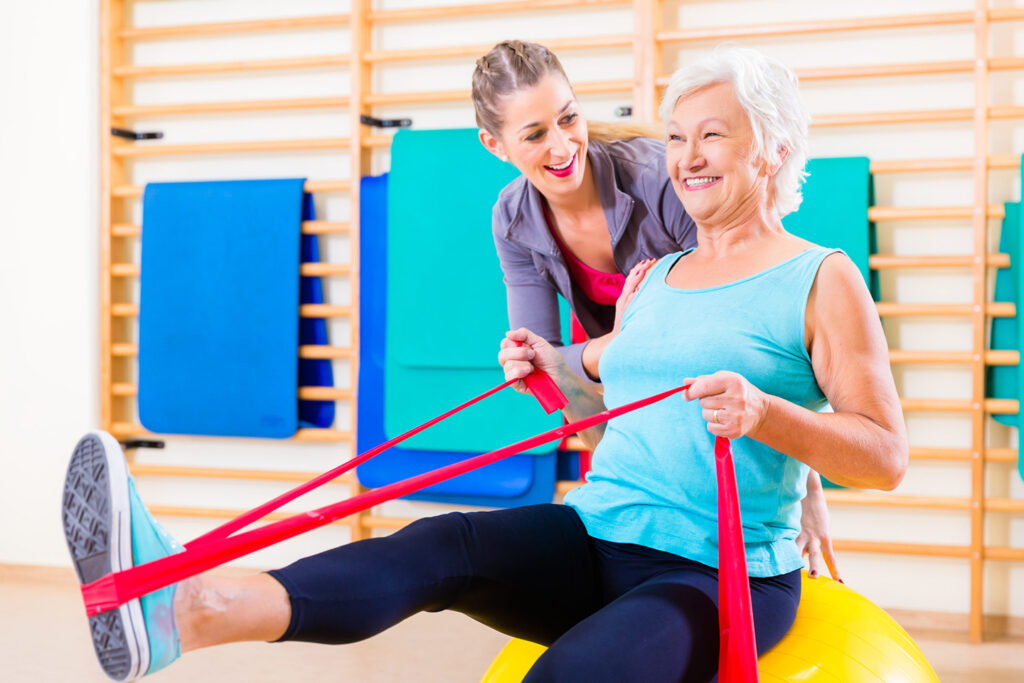Parkinson’s disease (PD) is a progressive neurological disorder that affects millions of people worldwide. One of the most challenging aspects of living with PD is the gradual loss of motor control, which can lead to difficulties with balance and gait and an increased risk of falls. While there is no cure for PD, there are strategies and therapies that can help improve movement and reduce the risk of falls. In this blog, we will explore the importance of gait and balance training for individuals with Parkinson’s disease and discuss some effective methods and exercises that can make a significant difference in their lives.
Understanding Parkinson’s Disease and Its Impact on Gait and Balance
Before diving into the specifics of gait and balance training, it’s essential to understand how Parkinson’s disease affects these aspects of a person’s life. PD primarily affects the brain’s ability to produce dopamine, a neurotransmitter that plays a crucial role in controlling movement and coordination. As dopamine levels decrease, individuals with PD may experience the following symptoms that directly impact their gait and balance:
- Bradykinesia: This refers to slowness of movement, making it difficult to initiate walking and take steps at a regular pace.
- Muscle Rigidity: Stiffness in the muscles can affect a person’s ability to maintain an upright posture and shift their weight properly.
- Tremors: Involuntary shaking of the limbs, particularly at rest, can disrupt balance and coordination.
- Postural Instability: PD can lead to a stooped posture and difficulty maintaining an upright position, making individuals more susceptible to falls.
Given these challenges, it’s clear that gait and balance training are crucial for maintaining mobility, independence, and quality of life for those with PD.
The Benefits of Gait and Balance Training
Gait and balance training are specialized therapies designed to address the specific challenges faced by individuals with Parkinson’s disease. These training programs offer a range of benefits, including:
- Improved Mobility: Gait training helps individuals with PD regain a more natural walking pattern, making it easier to move around independently.
- Enhanced Balance: Balance exercises strengthen the muscles and improve postural stability, reducing the risk of falls.
- Increased Confidence: As individuals with PD see improvements in their gait and balance, they often experience a boost in confidence and a greater sense of control over their movements.
- Reduced Falls: Proper gait and balance training can significantly decrease the likelihood of falls, which are a significant concern for those with PD.
- Enhanced Quality of Life: By maintaining mobility and reducing the risk of falls, gait and balance training contribute to an overall improvement in the quality of life for individuals with Parkinson’s disease.
Effective Gait and Balance Training Methods
Now, let’s explore some effective gait and balance training methods that can be incorporated into a comprehensive PD management plan:
- Physical Therapy: Working with a physical therapist who specializes in PD can be highly beneficial. They can create a customized exercise program tailored to an individual’s specific needs and progression of symptoms.
- Tai Chi: This ancient Chinese martial art focuses on slow, flowing movements and deep breathing. Tai Chi has been shown to improve balance and coordination in people with PD.
- Aquatic Therapy: Exercising in water provides resistance without putting excess strain on joints and muscles. Aquatic therapy can help improve balance and mobility for individuals with PD.
- Dance Therapy: Dancing, particularly styles like tango or ballroom dancing, can enhance balance and coordination while providing an enjoyable and social activity.
- Cueing Strategies: These involve using external cues like rhythmic auditory or visual cues to facilitate movement. For example, individuals with PD can step over lines on the floor to improve stride length and timing.
- Strength Training: Strengthening exercises, particularly those targeting the core and lower body, can help improve posture and balance.
- Functional Mobility Training: This focuses on practicing everyday movements such as getting up from a chair or stepping over obstacles to enhance functional mobility.
It’s important to note that gait and balance training should be tailored to the individual’s specific needs and abilities. Therefore, it’s essential to consult with a healthcare professional or physical therapist who can create a personalized plan.
Incorporating Gait and Balance Training into Daily Life
Gait and balance training should not be limited to formal therapy sessions. There are ways to incorporate these exercises into daily life to promote continuous improvement:
- Daily Walking Routine: Regular walking, even for short distances, can help maintain gait and mobility. Start with a pace that feels comfortable, and gradually increase the duration and intensity.
- Home Safety Modifications: Make necessary modifications at home to reduce fall risks, such as removing tripping hazards and installing handrails or grab bars in key areas.
- Stay Active: Engage in physical activities you enjoy, whether it’s gardening, swimming, or dancing. Staying active in a way that brings joy can be a motivating factor.
- Mindful Movement: Pay attention to your movements and posture throughout the day. Practicing mindfulness can help you become more aware of any balance or gait issues and address them in real-time.
- Supportive Footwear: Choose footwear that provides good arch support and stability, which can greatly impact balance.
Conclusion
Gait and balance training play a vital role in improving the lives of individuals living with Parkinson’s disease. These therapies offer a range of physical and psychological benefits, from increased mobility and enhanced balance to a greater sense of confidence and overall well-being. Remember that it’s essential to consult with a healthcare professional or physical therapist to develop a personalized training plan that suits your specific needs and progression of symptoms. By incorporating gait and balance training into their daily lives, individuals with PD can take significant steps toward improving movement and reducing the risk of falling, ultimately enhancing their quality of life.
Revolve Physical Therapy https://revolvephysicaltherapy.com/

